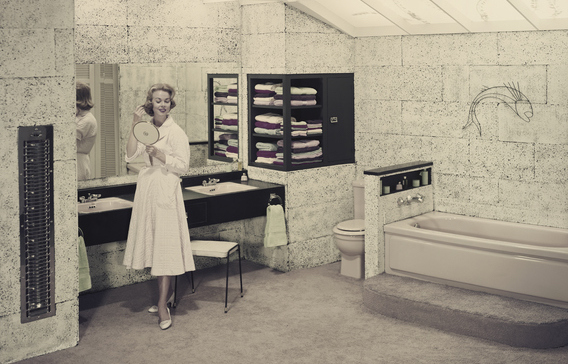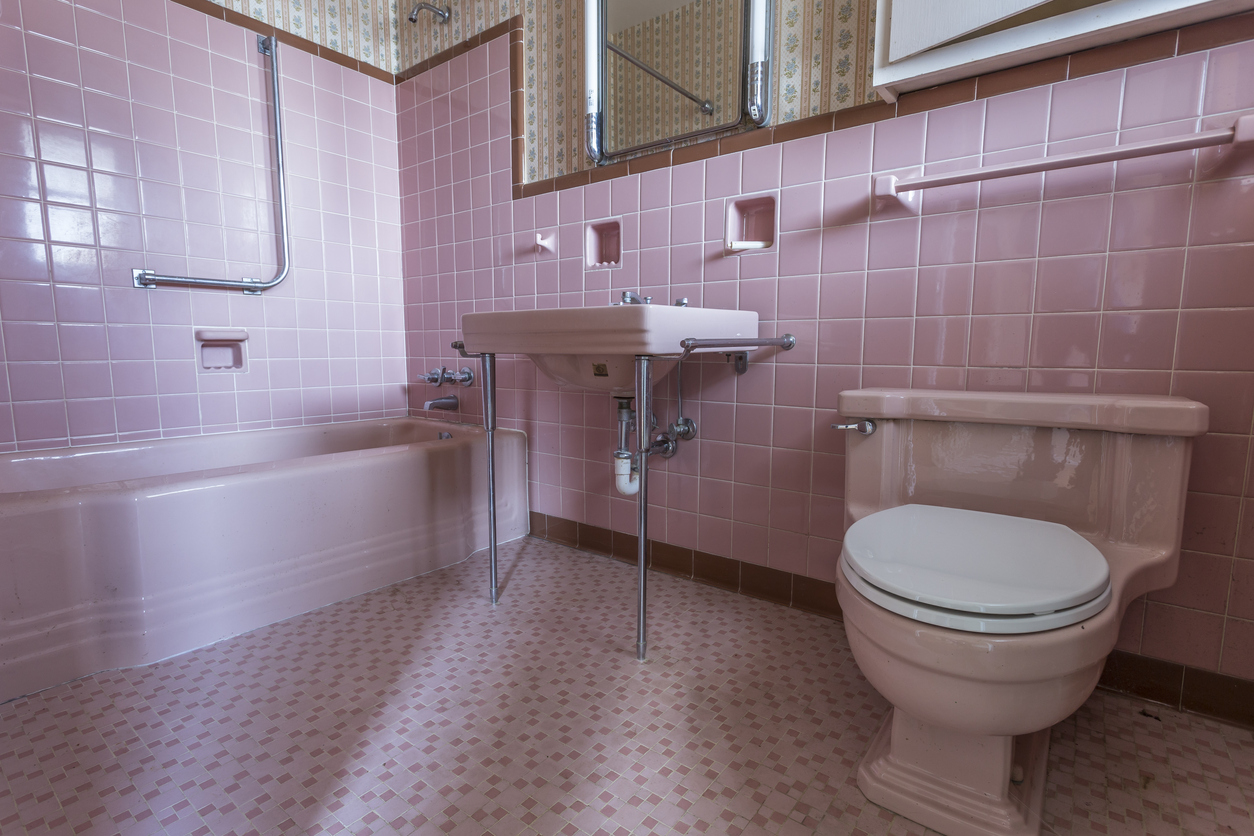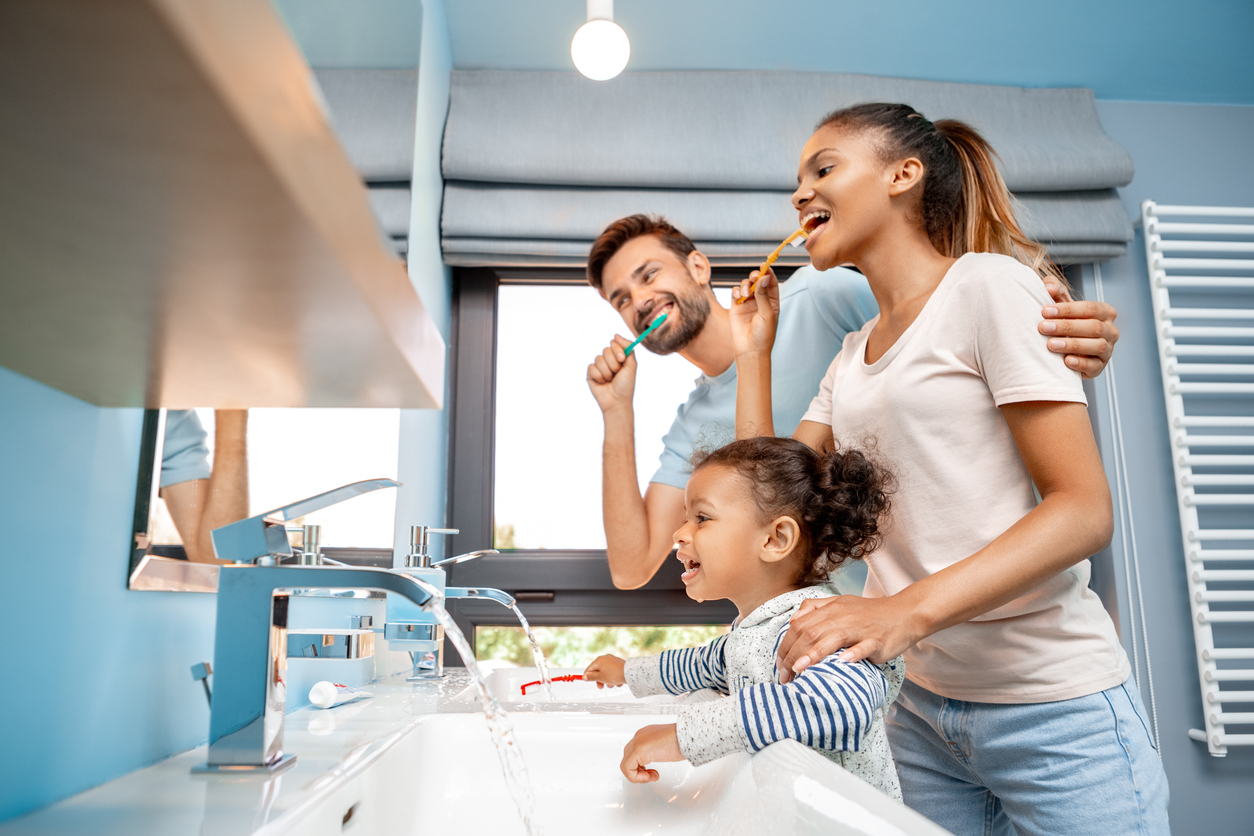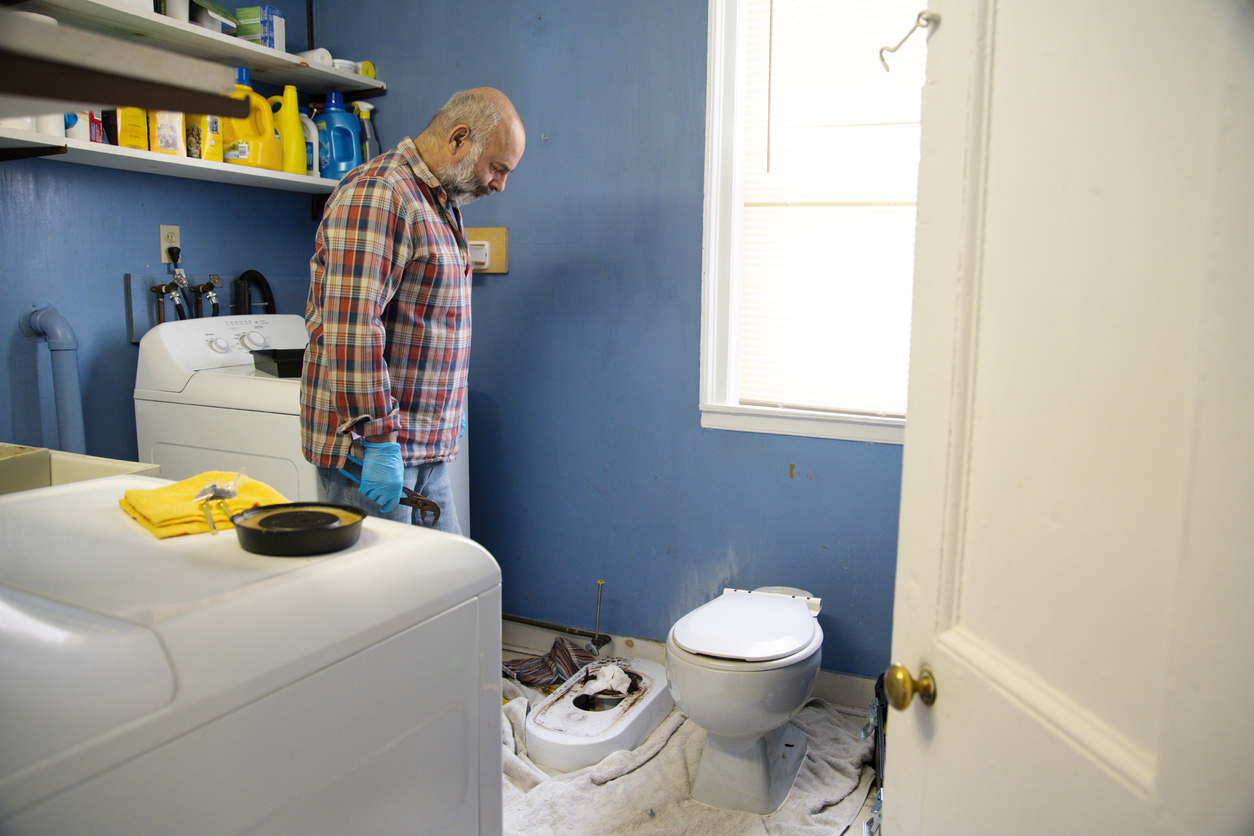

We may earn revenue from the products available on this page and participate in affiliate programs. Learn More ›
Living in a home with multiple bathrooms is something most people take for granted today. But this wasn’t always the case. Homes built before the 1940s typically only had one bathroom due to cost and space restrictions. However, as time went on and societal norms changed, there was a growing demand for more bathrooms in homes. In fact, according to The Atlantic, the number of bathrooms per person in America has doubled in the past 50 years. In this article, we’ll explore the history of residential bathrooms in the United States and look at how the number of bathrooms in homes has increased dramatically over the past century.
RELATED: Bathroom Remodel Cost: A Budgeting Guide for Homeowners

The Evolution of American Bathrooms
It’s important to understand the historical context of why homes only had one bathroom. In the early 20th century, indoor plumbing was a luxury that many homes did not have. Bathrooms also were considered a luxury, and it wasn’t until the late 19th and early 20th centuries that bathrooms became more common in middle-class homes. However, even then, most homes only had one bathroom.
The reason for this was primarily due to space and cost. Building a second bathroom was expensive, and many homes didn’t have enough room to accommodate an additional bathroom. On top of that, the focus when creating homes was on communal spaces, like living rooms and dining rooms, rather than private spaces like bedrooms and bathrooms.
In the post-World War II era, however, Americans moved to the suburbs in droves. Houses became larger and had space for more than one bathroom. By 1940, material costs associated with building bathrooms—like plastics and fiberglass—had plummeted, making the process much more affordable. Around this time, it also became more common to install en suite bathrooms in the primary bedroom of the home, making it necessary to have an additional bathroom that children and guests could access.
RELATED: 12 Vintage Bathroom Features That Never Go Out of Style

The Appeal of Multiple Bathrooms
Today, it’s extremely rare to find newly built homes that have only one bathroom. According to The Census Bureau’s 2021 Survey of Construction (SOC), 96.9 percent of new homes had more than one bathroom. Of those, 62.6 percent had two full bathrooms, and 27 percent had three full bathrooms. This shift is due to changing societal norms and increased demand for more bathrooms in homes.
The demand for more bathrooms is driven not only by changing societal norms but also by practical considerations. Families with multiple members find it inconvenient and time-consuming to share one bathroom. More bathrooms add greater convenience and efficiency for daily routines, particularly during busy mornings. Additionally, multiple bathrooms can increase a home’s value and appeal to potential buyers. As homeownership rates increase and people seek more amenities in their homes, it’s likely that the trend of multiple bathrooms in homes will continue.
RELATED: Solved! What Is a Jack-and-Jill Bathroom?

Strategies for Households with Only One Bathroom
While new homes are being built with more bathrooms, many people still live in older homes with only one. To deal with the inconvenience, some homeowners add additional bathrooms by converting existing spaces like closets into bathrooms or building bathrooms in underutilized spaces like basements. Though converting existing spaces is a viable option for some homeowners, it’s important to consider the potential costs and impact on the home’s value. Homeowners need to ensure that any renovation work is completed correctly and safely, with proper permits and inspections. Not to mention, if converting a closet into a bathroom means reducing the home’s storage space, it could negatively affect the home’s value.
For households that cannot or choose not to add an additional bathroom to their homes, coping strategies are necessary to deal with the inconvenience of having only one bathroom. One approach is to coordinate bathroom use within the household, ensuring that everyone has adequate time to use the bathroom in the morning or evening. This strategy can help prevent conflicts and overcrowding in the bathroom, but it requires communication and cooperation among family members. Additionally, reducing the time spent in the bathroom by taking shorter showers or baths can help minimize bathroom congestion in the morning.
With the increasing demand for more private spaces and amenities in homes, it’s evident that the trend of multiple bathrooms in homes will continue to grow. Homes with multiple bathrooms bring additional value and functionality, making it clear that having more than one bathroom has become a vital aspect of modern living.
